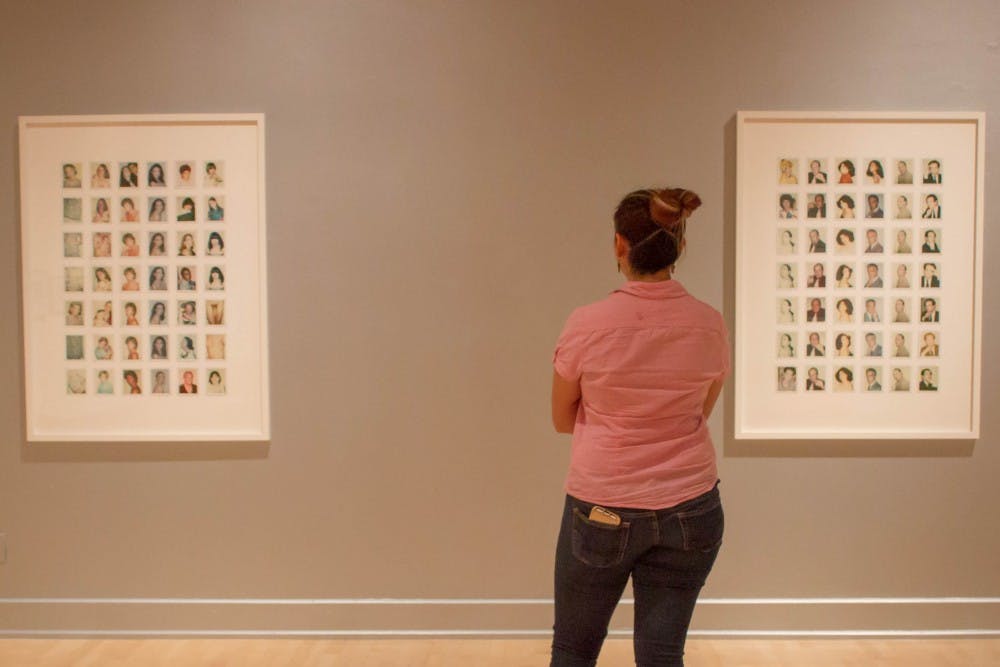The ASU Art Museum invites students to step into the colorful, revolutionary world of 1960s and 70s art icons in its upcoming exhibition Pop/Funk: Warhol and Frey.
The exhibition, which runs through the Spring 2019 semester, showcases the museum’s permanent collection of works by New York pop artist Andy Warhol and Bay Area funk artist Viola Frey.
Boasting a large collection of both artists’ works, Warhol’s half of the exhibition will be held in Gallery 3 from August 25 to December 29. Frey’s half of the exhibition will be held in Gallery 5 from September 1 to March 23.
The museum combined their art into one exhibition because of the artists’ shared reputations for spearheading anti-establishment art movements, according to Brittany Corrales, the ASU Art Museum’s curatorial coordinator.
“These are two artists that really redefined art through their movements,” Corrales said. “Basically, in the 1960s it was a period of social and cultural revolution, and the very idea of art was being challenged.”
Claudia Mesch, an ASU School of Art professor, agreed, citing the artists’ similar tastes for depicting the human figure with bright, unnatural colors.
“They were both challenging the status quo in similar ways, using the human form,” Mesch said. "It’s hard to buck the status quo, what the experts of the art world thought and what art collectors were buying. It’s hard to go against that, but they both did.”
The artists, however, had different ways of challenging the artistic norms of their time, which is reflected both in their respective movements and Warhol’s elevated popularity.
Mesch attributed Warhol’s celebrity status not only to his personality and talent, but also his status as a male painter and photographer living in New York, a world-famous artistic hub.
“(Warhol) fashioned himself into a celebrity, and he ended up basically being kind of a society painter,” she said. "He did a lot of portraits of society people in New York or Hollywood celebrities. The very state of celebritydom, of being a celebrity, really became a subject for him and he himself was a celebrity."
However, she said that Warhol’s heightened fame was in opposition with the artist’s tendency to critique celebrity culture through his work.
“You never knew whether what he was saying was sincere, or whether he was being sarcastic,” she said. “When he was asked ... he would say, ‘I paint Campbell's Soup cans because Campbell's Soup is really great,’ or ‘I think Coca-Cola is really great.’ You know, he kind of refused to make just flat statements.”
Corrales said that Frey had a different kind of quirk that set her apart from Warhol.
“Frey’s work is oftentimes cartoonish, so purposely sort-of larger than life,” she said. “They’re sometimes called ‘kitschy,’ compared to the sleek, stylized Andy Warhol pop art."
Corrales said Frey also played with gender norms in her art by swapping traditional gender roles in her sculptures.
The effects of both movements are still seen in the art world today, one of the most notable examples being the pop art-inspired "Hope" poster used by the Obama campaign in the 2008 presidential election.
Mesch said another one of Warhol's influences was his alleged use of ghost-artists.
“He started what has been called the postmodern, in that he insisted that he didn’t even do a lot of his own paintings … You understand that that’s really shocking to people, right? Art is supposed to be sincere, it’s supposed to be about your expression and your hand, and basically then he was signing things that he hadn’t even done.”
Elizabeth Roth, an ASU senior majoring in English and art, works for the museum. She said even the decorations in the gallery add to the authenticity of the exhibit. Multi-colored bean bag chairs are set up in the Warhol space, which were created and popularized in the 1960s and 70s, paying homage to that era.
“Museums are normally considered to be very reverent, very church-like, and the bean bags sort-of break down that barrier,” Roth said.
Mesch said that America’s ongoing attachment to these styles has to do with a sense of nostalgia for what was arguably one of the hippest eras in American art history.
“I think it goes beyond Andy Warhol the person and his art, it has to do with a period in American history," she said. "And maybe right now we don’t feel that we’re in as stable of a time."
Reach the reporter at mrobbin9@asu.edu or follow @MelissaARobbins on Twitter.
Like The State Press on Facebook and follow @statepress on Twitter.




